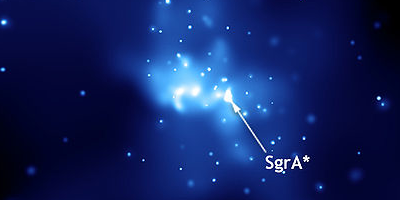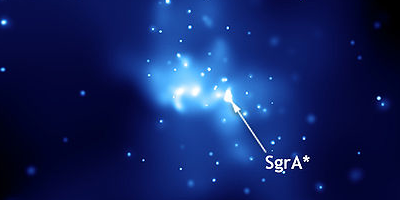Milky Way’s Center Stays in the Dark
The Fermi Gamma-Ray Space Telescope recently detected unexpectedly intense gamma rays coming from the center of the Milky Way, where a supermassive black hole (Sagittarius ) is believed to exist. Since known sources couldn’t have produced such a signal, researchers are debating whether the gamma rays may come from annihilations of dark matter in the halo surrounding the Milky Way. According to some theories, a so-called dark matter “spike” could also contribute to such a signal: the spike would arise from the strong gravitational pull of the supermassive black hole, compressing the nearby dark matter into a dense collection. Within the spike, dark matter particles would be more likely to annihilate, enhancing gamma-ray emission.
Now, Brian Fields, Stuart Shapiro, and Jessie Shelton at the University of Illinois at Urbana-Champaign have calculated the intensity of gamma-ray radiation that such a spike could generate. They show that, under some of the most plausible scenarios, the expected signal would exceed by far that observed by Fermi. This leads to two possible conclusions: either the emission is not due to dark matter, or the Galaxy’s center is different than that envisioned by the simplest galactic models.
Using a wide range of astrophysical parameters and proposed dark matter models, the group calculated that, if the black hole grew in a conventional way (by accreting matter onto a small seed), the expected signal should be at least one order of magnitude larger than the measured one. A dark matter origin could only be possible under more exotic scenarios for the Galactic center’s physics. For instance, the supermassive black hole could have formed through the merger of two black holes, or the spike’s structure could have been influenced by an unusually dense and clumpy population of so-far undetected stars.
This research is published in Physical Review Letters.
–Matteo Rini





